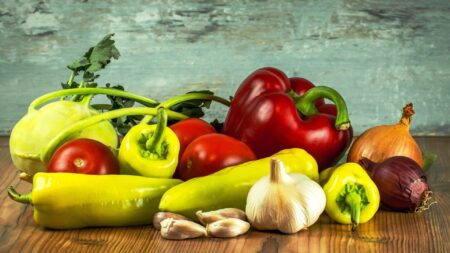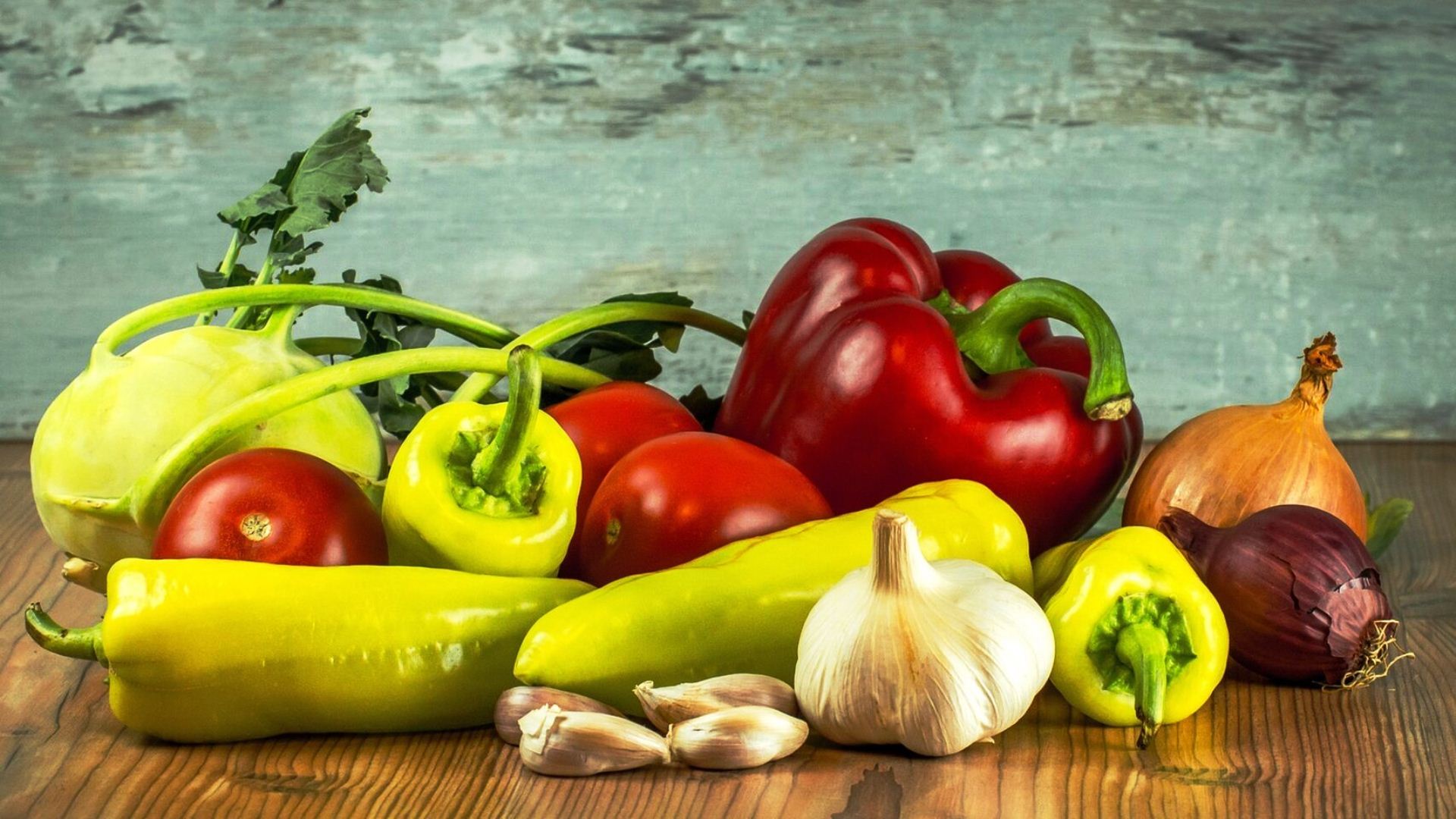 We explain what vegetables are and what their properties are. Also, how they differ from vegetables and legumes.
We explain what vegetables are and what their properties are. Also, how they differ from vegetables and legumes.
Hear
3 min. Reading
There are various types of vegetables, depending on what their edible part is.
What are vegetables?
Vegetables are a type of food of vegetable origin, that is, a type of edible plant , whose characteristic feature tends to be the presence of green color, in its stems, leaves or inflorescences . They are more or less equivalent to vegetables and vegetables, but not so to fruits, since the latter have a characteristic sweet or sour taste, which vegetables lack. That is why we usually talk about “fruits and vegetables”.
It is important to understand that vegetables are a term of popular origin, which has no real scientific basis . It comes from the Latin viridis , a word from which also comes the name of the green color, predominant (but not exclusive) in this food group.
Vegetables have an important presence in life and culture : the Mediterranean diet includes a wide selection of vegetables, and most recommended nutritional regimens have a large presence of vegetables as a source of fiber and vitamins and antioxidants.
There are various types of vegetables, depending on what their edible part is:
- Leafy vegetables, such as cabbage, chard, or spinach.
- Stem vegetables, such as leeks, celery, or asparagus.
- Flower or inflorescence vegetables, such as artichokes, broccoli or cauliflower.
- Fruit vegetables, such as eggplant, zucchini, cucumber or pepper.
- Bulb vegetables, such as garlic, onion, or beets.
- Seed vegetables, such as peas, beans, or soybeans.
- Root vegetables, such as turnips, radishes, carrots, or cassava (cassava).
- Tuber vegetables, such as potatoes, sweet potatoes, or yams.
- Rhizome vegetables, such as ginger.
It can help you: Nutrition
Differences between vegetables, vegetables and legumes
The terms vegetable, vegetable and legume are often used interchangeably, because in all cases they are edible vegetables . However, there are certain key features to differentiate these three terms.
In the first place, vegetables are those foods of plant origin grown in orchards or irrigated land . In fact, the origin of the word goes back to the Latin hortus (“orchard”). So when talking about vegetables, it refers to a category of vegetables that contains both vegetables and legumes. In other words, vegetables are classified into vegetables and legumes.
Therefore, vegetables are those vegetables in which the green color predominates , either in the leaves, stems or in other parts of the plant. This does not mean that the portion we consume must necessarily be green: of garlic, for example, we consume the final bulb, but the plant has long green leaves.
For their part, legumes are vegetables, and are the fruit or seeds of leguminous plants , whose characteristic feature is that they are produced within a tender and elongated casing called a pod . Such is the case of beans or peas.
properties of vegetables
Despite their great diversity, vegetables present a set of important common features, such as:
- The green color predominates in them, due to the chlorophyll of their plants, but at the same time their edible portions can have a very different pigmentation, which reflects their content of organic substances. For example, the orange or yellow color of some vegetables reveals the presence of beta-carotene, while red and blue indicate the presence of anthocyanin.
- They present an important contribution in terms of fiber, minerals and vitamins, with a very low content of proteins and lipids , and a variable amount of carbohydrates. Its main vitamins are A (in yellow or red vegetables) and C (in mostly green vegetables).
- There are more than 20,000 species, coming from all the continents of the planet (except Antarctica). 20% of the total of these species represents 90% of the food consumed by humanity .
- Its high content of vitamins and minerals (such as potassium, iron, magnesium and fluoride) makes them important allies for disease preventionand for diets to lose weight or heart protection.
importance of vegetables
Vegetables have accompanied humanity since the beginning of civilization.
Vegetables are a fundamental food in the human diet. Its inclusion in the regular diet provides large amounts of nutrients and natural fiber, which improves digestive processes and guarantees the body the nutritional diversity necessary to have a healthy diet .
Vegetables have accompanied humanity since the beginning of civilization, and they were the first foods to be consumed. For example: olives and figs in the Mediterranean or tomatoes and cassava in most American pre-Columbian cultures.
Cultivation and harvest of vegetables
Vegetables, as vegetables, are plant foods grown in orchards, irrigated lands and other forms of sowing , either with massive agro-industrial methods, or in small-time orchards for family subsistence. Their diversity of crops is due to the fact that they are not only basic foods in most human diets, but can also be incorporated into the preparation of other dishes, such as meat, fish and soups, among many others.
Most of the vegetables are annual and biennial, that is, they are harvested a year or two after planting , but a few species are perennial. In the warm intertropical zones its cultivation is determined by the pattern of rainfall , while in the temperate zones it is determined by the heat and the length of daylight .
On the other hand, the vegetables are harvested following specific time patterns , since when separating them from the rest of the plant (or separating the plant from the soil) the vegetables continue to lose water through natural transpiration, so they tend to dry out and ripen. Potatoes, for example, benefit from a short ripening period in a warm and humid environment, while other types of vegetables require more immediate transfer to the consumer .
Main vegetable producing countries
| Country | Volume of vegetables produced (in thousands of tons) |
| China | 539,993 |
| India | 100,045 |
| USA | 35,609 |
| Türkiye | 25,901 |
| Iran | 19,995 |
| Egypt | 19,487 |
| Italy | 14,201 |
| Russia | 13,283 |
| Spain | 12,679 |
| Mexico | 12,515 |
